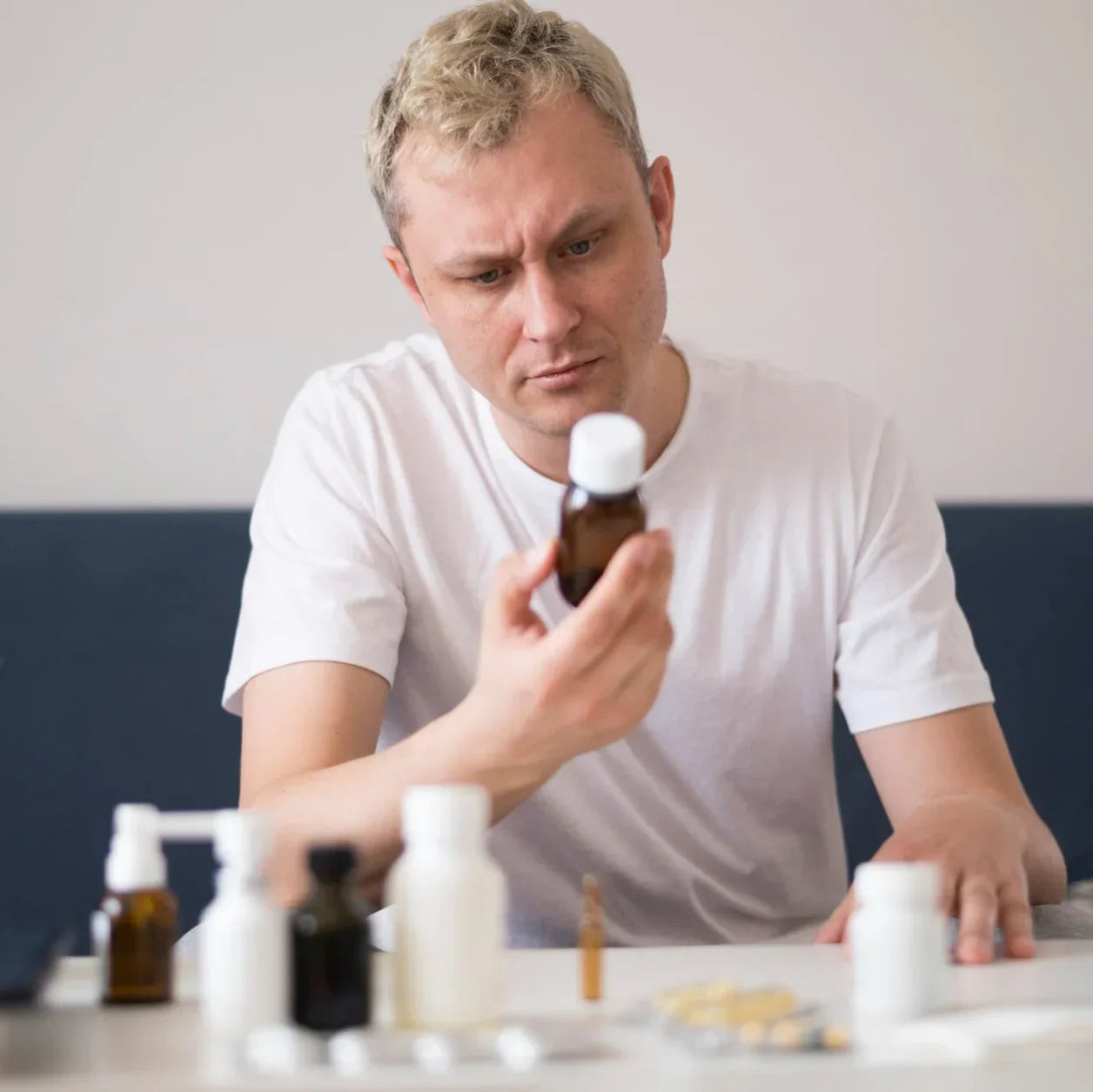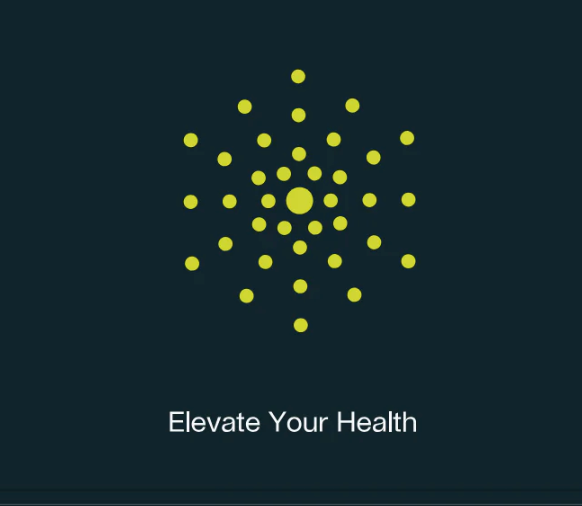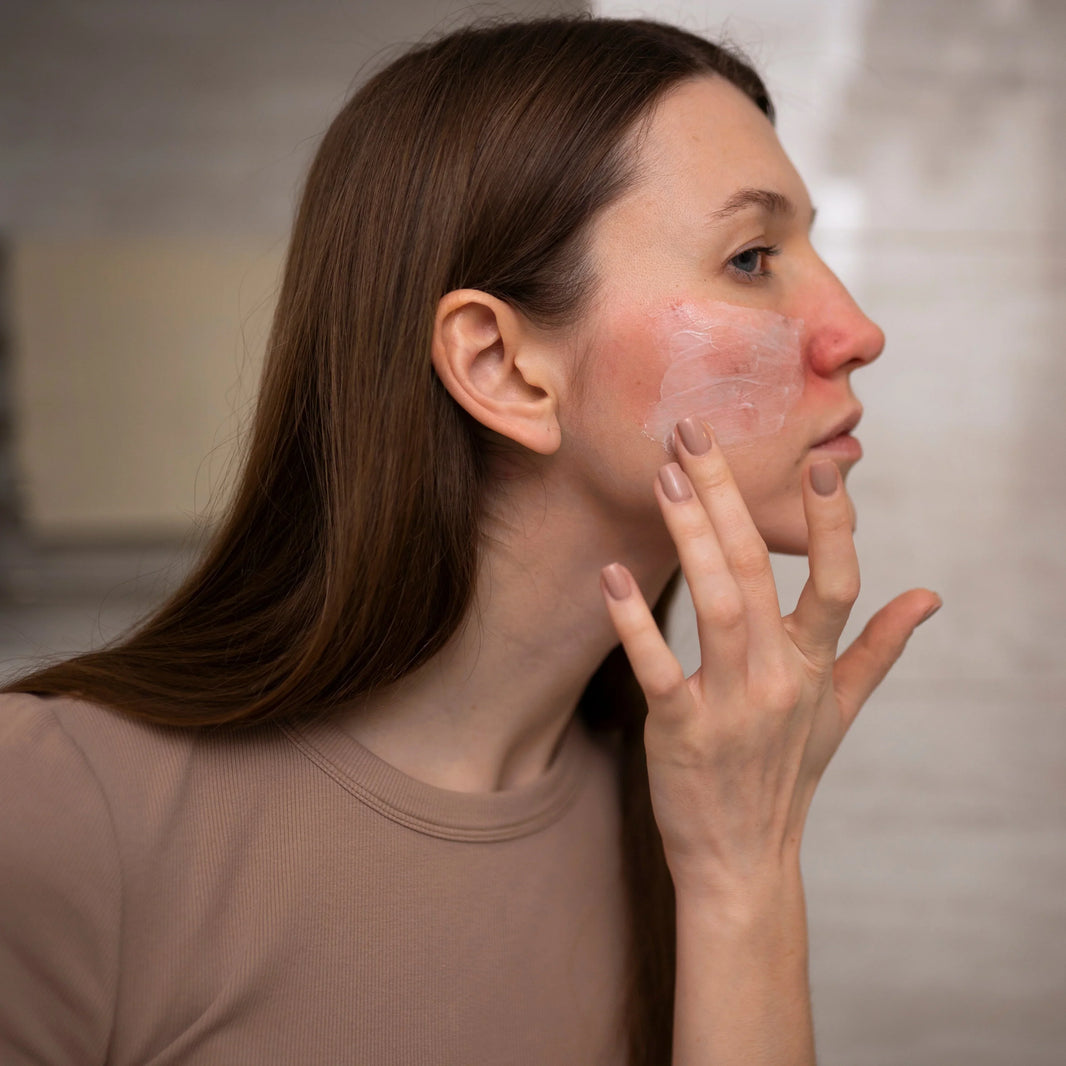The hormonal system in men represents a complex, interconnected network that regulates numerous physiological processes from reproduction and sexual function to metabolism and cognitive performance. Understanding what constitutes "essential hormone support" requires examining both the fundamental hormonal pathways in men and the various interventions purported to maintain or enhance these systems. This comprehensive review explores the mechanisms of action, physiological pathways, and evidence behind interventions marketed for men's hormonal health, distinguishing between well-supported approaches and those lacking substantial scientific validation.
The Fundamental Male Hormonal System
The male endocrine system centers around several key hormones that work in concert to regulate reproductive health, sexual function, muscle development, bone density, and numerous other physiological processes. Testosterone stands as the primary male sex hormone, serving as a cornerstone for spermatogenesis and overall male reproductive health. Its production and regulation depend on a sophisticated hormonal cascade beginning in the hypothalamus, which secretes gonadotropin-releasing hormone (GnRH) in a pulsatile manner to stimulate the pituitary gland's release of luteinizing hormone (LH) and follicle-stimulating hormone (FSH)8. This hypothalamic-pituitary-gonadal (HPG) axis represents the fundamental regulatory pathway for male reproductive hormones, with LH stimulating testosterone production in the testes and FSH supporting the development and function of Sertoli cells essential for sperm production3.
Research has established that testosterone plays multiple roles beyond reproduction, influencing muscle mass, bone density, fat distribution, and cognitive functions. Low testosterone levels have been associated with reduced sexual desire, erectile dysfunction, decreased energy, and mood disturbances5. Furthermore, the conversion of testosterone to dihydrotestosterone (DHT) by the enzyme 5α-reductase represents another critical pathway in male physiology, with DHT being more potent than testosterone in certain tissues11. Additionally, men produce estradiol through the aromatization of testosterone, and this estrogen plays important roles in bone health, brain function, and cardiovascular health even in males16.
Beyond the sex hormones, other endocrine components like growth hormone, dehydroepiandrosterone (DHEA), cortisol, and thyroid hormones contribute significantly to men's overall health. Growth hormone influences tissue growth, metabolism, and sexual function, while imbalances in either direction can adversely affect male sexual health5. DHEA, primarily produced by the adrenal glands, serves as a precursor to both testosterone and estrogen, with evidence suggesting cardioprotective effects as demonstrated by its inverse association with coronary artery calcification in elderly men39.
Evidence-Based Nutritional Support for Men's Hormones
Among the nutritional elements essential for male hormonal health, zinc stands out with robust scientific support. As the second most abundant trace element in the human body, zinc cannot be stored and requires regular dietary intake9. Research indicates that zinc functions as a key component in testosterone production, with zinc deficiency directly impeding spermatogenesis and negatively affecting serum testosterone concentration9. The mineral also demonstrates important antioxidant properties that protect reproductive tissues from oxidative stress and plays a crucial role in maintaining the epithelial integrity of reproductive organs9. Men experiencing infertility and those exposed to higher oxidative stress, such as smokers, may particularly benefit from ensuring adequate zinc levels.
Selenium represents another mineral with established importance for male reproductive function. As an essential component of selenoproteins, selenium plays a significant role in antioxidant defense through glutathione peroxidase, an enzyme whose activity directly depends on selenium availability15. This antioxidant protection appears particularly important for reproductive tissues vulnerable to oxidative damage. While the evidence regarding selenium's direct effects on hormone levels appears less conclusive than for zinc, its role in protecting reproductive tissues from oxidative stress makes it an important consideration for men's hormonal health.
Vitamin D supplementation has demonstrated positive effects on men's hormonal health in certain contexts. Research involving men with idiopathic infertility showed that regular vitamin D supplementation for three months positively correlated with improved sperm parameters and was associated with beneficial changes in follicle-stimulating hormone and testosterone levels34. These findings suggest that vitamin D may play a supportive role in male reproductive hormone regulation, though more research is needed to clarify the precise mechanisms and optimal dosing strategies.
Botanical Compounds with Supportive Evidence
Among herbal supplements marketed for men's hormonal health, Withania somnifera (ashwagandha) and Trigonella foenum-graecum (fenugreek) stand out with relatively stronger evidence bases. Double-blind placebo-controlled randomized clinical trials have demonstrated that both significantly increase testosterone levels in men31. Ashwagandha appears to work through multiple mechanisms, potentially inhibiting the effects of cortisol and prolactin on the hypothalamic-pituitary-gonadal axis while possibly directly affecting hypothalamic function31. This stress-moderating effect may explain part of its beneficial impact on hormonal health, as chronic stress and elevated cortisol can suppress testosterone production.
Fenugreek seeds contain the compound diosgenin, which functions as a precursor for sex hormone synthesis in the gonads31. This provides a clearer mechanistic understanding of how this botanical may directly support testosterone production. The scientific evidence for these two herbal extracts exceeds that available for many other popular botanical supplements marketed for men's hormonal health.
In contrast to these better-supported botanicals, many popular supplements in men's health formulations lack substantial scientific validation. Common ingredients in top-selling men's sexual health supplements include ginseng, tribulus, horny goat weed, maca, DHEA, ginkgo, and yohimbine, among others14. However, the medical literature evaluating the efficacy of these substances is generally of low quality, making it difficult to draw firm conclusions about their effectiveness for hormonal support14. This highlights the importance of distinguishing between marketing claims and evidence-based interventions when considering supplements for hormonal health.
Hormonal Interactions and Complex Pathways
The male hormonal system exhibits remarkable complexity in its regulatory networks, with various hormones exerting reciprocal effects on one another. Research has highlighted that testosterone and cortisol interact in complex ways that influence male behavior and physiological responses. An experimental study examining the causal effect of testosterone administration on men's competitive behavior found that testosterone's effects were moderated by basal cortisol levels17. Men with low basal cortisol who received testosterone showed different behavioral patterns than those with high cortisol, suggesting that the broader hormonal environment significantly influences how specific hormones like testosterone affect physiology and behavior17.
This research underscores the importance of considering hormonal balance rather than focusing exclusively on increasing single hormones like testosterone. For instance, while growth hormone (GH) is essential for normal male sexual function, both deficiency and excess of GH can negatively impact sexual health5. This indicates that hormonal optimization rather than maximization represents the appropriate goal for hormonal support interventions.
Lifestyle Factors and Environmental Influences
Beyond supplements and nutritional interventions, lifestyle factors profoundly influence male hormonal health. Physical exercise, particularly resistance training, has been shown to acutely increase testosterone levels, though the long-term effects depend on training intensity, volume, and recovery. Sleep quality and duration significantly impact testosterone production, with chronic sleep deprivation associated with reduced testosterone levels. Psychological stress, which elevates cortisol, can suppress testosterone production through inhibition of the hypothalamic-pituitary-gonadal axis.
Environmental factors also play increasingly recognized roles in male hormonal health. Endocrine-disrupting chemicals found in plastics, pesticides, and industrial compounds can interfere with normal hormonal signaling. Research indicates that certain compounds structurally similar to estrogens compete with endogenous hormones for receptor binding sites, potentially disrupting hormonal homeostasis45. This environmental dimension suggests that minimizing exposure to endocrine disruptors may constitute an important aspect of comprehensive hormone support for men.
Questionable Interventions and Exaggerated Claims
The market for men's hormone support products includes numerous interventions with limited scientific support despite widespread marketing. Though popular in many supplement formulations, DHEA supplementation has yielded inconsistent results in clinical studies, with potential benefits primarily observed in men with substantially below-normal levels. Similarly, many adaptogenic herbs marketed for stress reduction and hormonal balance lack rigorous clinical evidence specifically evaluating their effects on male hormones.
Particularly concerning are over-the-counter testosterone "boosters" that promise dramatic increases in testosterone levels without pharmaceutical intervention. Many such products rely on proprietary blends of ingredients with limited research support, often at doses below those used in whatever studies exist. These products typically cannot deliver the significant hormonal changes they advertise, highlighting the gap between marketing claims and scientific evidence in this product category.
Medical Approaches to Hormone Support
For men with clinically diagnosed hormonal deficiencies, medical interventions under healthcare supervision represent the most evidence-based approach. Testosterone replacement therapy has well-established benefits for men with hypogonadism, improving sexual function, bone density, muscle mass, and mood38. However, such therapy carries potential risks including cardiovascular effects, impacts on prostate health, and suppression of endogenous testosterone production, underscoring the importance of proper medical supervision.
New pharmaceutical formulations continue to emerge, such as the oral testosterone undecanoate formulation discussed in one research abstract, which demonstrated significant increases in total testosterone and calculated free testosterone at a follow-up period of six months38. Such medical approaches require careful consideration of individual risk factors and ongoing monitoring to balance benefits against potential side effects.
Conclusion
The concept of "essential men's hormone support" encompasses a complex interplay of nutritional, botanical, lifestyle, and sometimes medical interventions aimed at optimizing male hormonal health. The scientific evidence most strongly supports the role of certain micronutrients, particularly zinc and to a lesser extent selenium and vitamin D, in maintaining healthy testosterone levels and reproductive function. Among botanical supplements, ashwagandha and fenugreek demonstrate relatively stronger evidence and clearer mechanisms of action compared to many other popular herbal ingredients in men's health formulations.
The multifaceted nature of the male hormonal system necessitates a comprehensive approach to hormone support that considers nutritional adequacy, stress management, sufficient sleep, regular physical activity, and minimization of environmental endocrine disruptors. For men with clinically significant hormonal deficiencies, medical interventions under proper supervision remain the most evidence-based approach, while those without diagnosed deficiencies may benefit more from foundational lifestyle and nutritional strategies rather than supplement regimens with limited scientific validation.
As research continues to evolve in this field, the distinction between evidence-based interventions and marketing-driven claims will hopefully become clearer, allowing men to make more informed choices about their hormonal health. Future research should focus on elucidating the long-term effects of various interventions on the complex hormonal networks that regulate men's health throughout the lifespan.
Citations:
- https://www.ncbi.nlm.nih.gov/pmc/articles/PMC6142151/
- https://www.ncbi.nlm.nih.gov/pmc/articles/PMC4654491/
- https://www.ncbi.nlm.nih.gov/pmc/articles/PMC11172568/
- https://www.semanticscholar.org/paper/4cf692d84237278747b79720d172a805d9ce886a
- https://pubmed.ncbi.nlm.nih.gov/39586237/
- https://www.ncbi.nlm.nih.gov/pmc/articles/PMC7898868/
- https://pubmed.ncbi.nlm.nih.gov/21908557/
- https://pubmed.ncbi.nlm.nih.gov/30272161/
- https://www.ncbi.nlm.nih.gov/pmc/articles/PMC6010824/
- https://www.semanticscholar.org/paper/ae5b2c244a90a3c04f5cfb21fbcff2d348d3f718
- https://www.ncbi.nlm.nih.gov/pmc/articles/PMC10796553/
- https://pubmed.ncbi.nlm.nih.gov/29634515/
- https://www.ncbi.nlm.nih.gov/pmc/articles/PMC5961275/
- https://pubmed.ncbi.nlm.nih.gov/26531010/
- https://www.ncbi.nlm.nih.gov/pmc/articles/PMC7353379/
- https://pubmed.ncbi.nlm.nih.gov/34982475/
- https://pubmed.ncbi.nlm.nih.gov/35201818/
- https://www.semanticscholar.org/paper/4c7566834a75da097b8be27dfeafc66f06033b50
- https://pubmed.ncbi.nlm.nih.gov/31480979/
- https://pubmed.ncbi.nlm.nih.gov/39709322/
- https://www.semanticscholar.org/paper/4cfc19311f7d20f41d1e801c93c09e391b378a84
- https://pubmed.ncbi.nlm.nih.gov/37648906/
- https://www.ncbi.nlm.nih.gov/pmc/articles/PMC9917953/
- https://www.semanticscholar.org/paper/aab31e5ad90ff2c4ab01743a48c1e232b1226334
- https://www.ncbi.nlm.nih.gov/pmc/articles/PMC11679282/
- https://www.semanticscholar.org/paper/38997405be931a1545f86d1eb3cbbb68607f676c
- https://www.semanticscholar.org/paper/3c755d80b12a8735a7883f2baefcf64338561f31
- https://www.semanticscholar.org/paper/91f2caf58a81aa92f6287862b2cbd7954efe4a26
- https://www.semanticscholar.org/paper/8bde47050b4243527b78439f40a35e3122e8c40e
- https://www.ncbi.nlm.nih.gov/pmc/articles/PMC11644786/
- https://pubmed.ncbi.nlm.nih.gov/38628109/
- https://www.semanticscholar.org/paper/1b4c31c1ed8b0499a45f34ca049243e01595f1d1
- https://pubmed.ncbi.nlm.nih.gov/25573899/
- https://www.ncbi.nlm.nih.gov/pmc/articles/PMC11140254/
- https://pubmed.ncbi.nlm.nih.gov/18097561/
- https://www.ncbi.nlm.nih.gov/pmc/articles/PMC10876238/
- https://www.semanticscholar.org/paper/dee015d067a8aa5b518b43e42ed9216dc77e064e
- https://www.semanticscholar.org/paper/310245099225d9bb15ec8c5b155da54eb65fd009
- https://www.ncbi.nlm.nih.gov/pmc/articles/PMC10655543/
- https://www.ncbi.nlm.nih.gov/pmc/articles/PMC5675228/
- https://pubmed.ncbi.nlm.nih.gov/38492111/
- https://pubmed.ncbi.nlm.nih.gov/34758968/
- https://www.semanticscholar.org/paper/e95cae168e41e2210764bd22e417a57f4485bae1
- https://pubmed.ncbi.nlm.nih.gov/38629685/
- https://www.ncbi.nlm.nih.gov/pmc/articles/PMC11311417/
- https://www.ncbi.nlm.nih.gov/pmc/articles/PMC11627179/
- https://www.semanticscholar.org/paper/ded63e2b6222b67d2c223e21a9b89d458dc10199
- https://www.ncbi.nlm.nih.gov/pmc/articles/PMC10482483/
- https://pubmed.ncbi.nlm.nih.gov/26767814/
- https://pubmed.ncbi.nlm.nih.gov/12295498/
- https://www.semanticscholar.org/paper/0a9546269d1b8817a90bbd3eebf836bf04ca092b
- https://www.semanticscholar.org/paper/1bf00e00f3f7d4d357a4f765e8041bf5e38b00be
- https://www.ncbi.nlm.nih.gov/pmc/articles/PMC3121466/
- https://www.ncbi.nlm.nih.gov/pmc/articles/PMC3375273/
- https://www.ncbi.nlm.nih.gov/pmc/articles/PMC10376316/
- https://www.ncbi.nlm.nih.gov/pmc/articles/PMC10711270/
- https://www.ncbi.nlm.nih.gov/pmc/articles/PMC10779036/
- https://www.ncbi.nlm.nih.gov/pmc/articles/PMC11076347/
- https://www.ncbi.nlm.nih.gov/pmc/articles/PMC11128654/
- https://www.ncbi.nlm.nih.gov/pmc/articles/PMC11197330/
- https://www.semanticscholar.org/paper/69f3c525e4496395461fa88e755b18edb85b473a
- https://www.ncbi.nlm.nih.gov/pmc/articles/PMC10987448/
- https://pubmed.ncbi.nlm.nih.gov/23672655/
- https://pubmed.ncbi.nlm.nih.gov/13129811/
- https://pubmed.ncbi.nlm.nih.gov/27348623/
- https://www.ncbi.nlm.nih.gov/pmc/articles/PMC9647904/
- https://www.ncbi.nlm.nih.gov/pmc/articles/PMC9486389/
- https://www.ncbi.nlm.nih.gov/pmc/articles/PMC10305315/
- https://www.semanticscholar.org/paper/09f145c1b26bf6d4135d440279d68260807efe22








